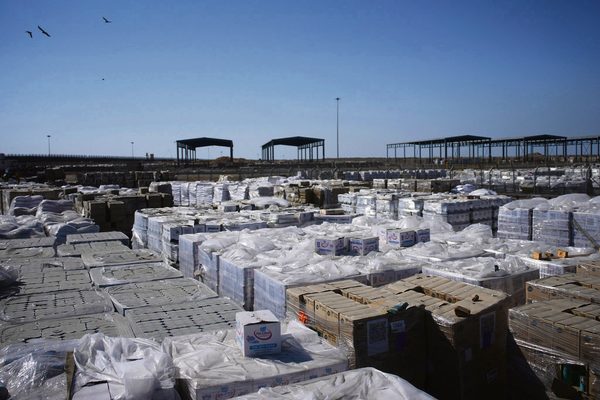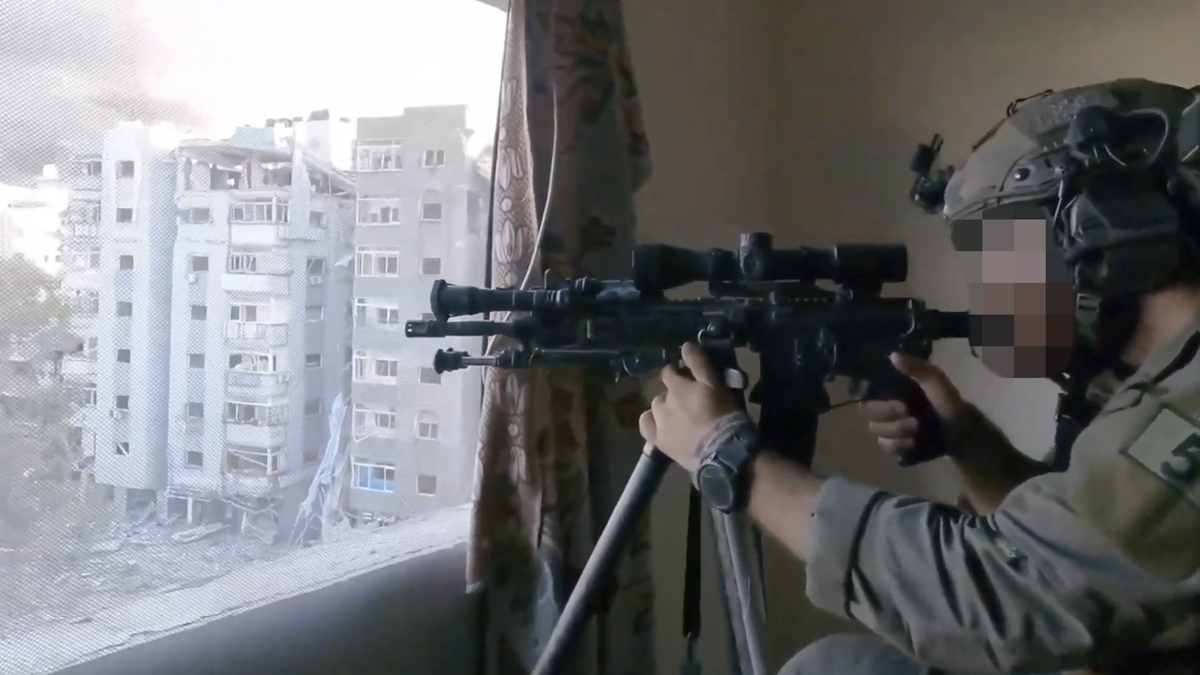By Hebrew University
Copyright australianjewishnews

A comprehensive academic study examining accusations of genocide and war crimes during the Israel-Gaza conflict has concluded there is no factual basis for claims that Israel deliberately starved Palestinians or systematically targeted civilians between October 2023 and June 2025.
The research, led by Hebrew University military historian Professor Danny Orbach alongside three co-authors, utilises quantitative analysis, forensic documentation and comparative military history to examine what it describes as “systemic failures in major international information bodies” reporting on the conflict.
“The goal of this research is to carefully assess both primary and secondary sources in order to draw independent conclusions about the events of the conflict,” the report states. “This process involved reviewing testimonies, primary sources, and the methodology of data collection utilised by organisations and researchers promoting the genocide allegation, as well as conducting statistical analysis and distinguishing between narratives promoted by various parties and verified facts.”
Published by Bar-Ilan University’s Begin-Sadat Centre for Strategic Studies, the study does not seek to provide “legal or moral exoneration” for Israel’s conduct, but aims to distinguish “propaganda from fact” through rigorous examination of evidence behind genocide allegations.
Food aid exceeded pre-war levels
The study’s most significant finding challenges widespread claims that Israel deliberately starved Gaza’s population. According to the researchers, more food entered Gaza during the war than before October 7, 2023.
Pre-war UN records show an average of 73 food trucks entered Gaza daily in 2022. During the fighting until January 17, 2025, Israeli military coordination body COGAT recorded an average of 101 food trucks daily, while retroactively corrected UNRWA data indicated 83 food trucks per day.
The researchers argue that claims requiring 500 aid trucks daily stem from “misrepresentation by UN bodies” that went “unchallenged and unchecked”. They suggest extensive looting by Hamas explains discrepancies between aid deliveries and reported shortages.
Food that entered Gaza during the ceasefire should have sufficed until late July 2025 according to World Food Programme projections, even without additional aid after fighting resumed, the study claims.
“Although UNRWA initially reported a 70 per cent drop in aid after May 2024 and the Rafah operation, it later retroactively corrected these reports,” the authors write. “This correction was effectively unannounced and hence the supposed aid drop continues to be cited broadly.
“Nevertheless, we strongly criticise the Israeli government’s decision in March 2025 to halt aid supplies to Gaza, notwithstanding the systematic looting and profiteering of aid by Hamas,” the report states. “It was wrong to block traditional distribution methods before viable alternatives were established.”
Agricultural claims disputed
The study challenges assertions that 44 per cent of Gaza’s food comes from local agriculture, describing this figure as “baseless even before the Hamas takeover”. The researchers estimate that even in 2005, Gazan agriculture accounted for no more than 12 per cent of caloric consumption, with the percentage likely much lower today. Even if every ton of crops produced in Gaza in 2011 was substituted, the number of trucks entering Gaza per capita throughout the war would still be 58 per cent higher than in 2011, according to the analysis.
Civilian casualty methodology questioned
While acknowledging that “isolated incidents may point to negligence or localised misconduct and suspicion of individual war crimes”, the study found no evidence of systematic civilian targeting policies.
“There is no evidence to suggest a systematic Israeli policy of targeting or massacring civilians,” the report states. “It is our assumption that every war involves war crimes, and it is the responsibility of the military to investigate, identify and hold accountable those responsible in order to minimise such transgressions as much as possible.”
The researchers accuse Hamas of data manipulation through the Gaza Health Ministry, which “per Hamas directives, categorises all deaths as civilian”. This manipulation has “significantly skewed international reporting”, they argue.
“By analysing original Hamas documents, we demonstrate that since 2014, Gaza authorities have mandated the classification of all fallen combatants as ‘innocent citizens’,” the study notes. “Hamas has consistently sought to present the highest possible civilian fatality count and has directed its health ministry to manipulate data.”
The study suggests indications of age-related natural deaths being included in casualty lists, particularly of women, while combat-aged men are excluded from tallies.
Evacuation zones proved safer
According to partial data analysed, less than four per cent of deaths occurred in Mawasi and central camps designated as evacuation zones by the Israeli military. The researchers argue this undermines claims of deliberate attacks on safe areas.
“The failure of the UN to cooperate with the establishment of such zones resulted in considerable loss of civilian life,” the study states.
The authors describe Israeli military precautionary measures as “exceptional” and “unprecedented”, including early warnings, precision targeting and mission aborts to avoid civilian harm, which they say reduced non-combatant casualties despite being “costly to the IDF”.
“We have found no evidence to support claims of deliberate bombing of civilians by the IDF during the war, nor any indication of carpet bombing intended to inflict mass civilian casualties in Gaza,” the study states. “The IDF has employed numerous protective measures to minimise ‘collateral damage’. Some of these precautions are unprecedented in global military history and have come at a significant cost to the IDF.”
The researchers note that the military high command has vetoed many operations due to concerns over disproportionate collateral damage, with urban warfare experts raising concerns that IDF tactics “may set unrealistic operational standards for other militaries in the future”.
UN reporting criticised
The study identifies “systematic failures in UN and NGO reporting” based on “circular citation, opaque assessments, and unannounced retroactive corrections”. UNRWA’s truck count discrepancies were corrected without sufficient publicity, while updated UN data confirms Israel’s assertions of increased aid after May 2024, according to the researchers.
“The methodologies employed by human rights organisations and UN agencies are highly problematic,” the report states. “Unlike intelligence agencies, which can deploy operatives and gather data even within closed, insulated societies or hostile factions, human rights organisations are largely limited to relying on testimonies from individual witnesses, publicly reported data, and cooperation with local governments, hoping that these sources remain politically neutral.”
The authors draw parallels with the 2009 Gaza war, citing former UN jurist Richard Goldstone’s 2011 Washington Post op-ed expressing regret over some conclusions in his fact-finding mission report. “If I had known then what I know now, the Goldstone Report would have been a different document,” Goldstone wrote.
Historical precedents examined
The research extends beyond the Gaza conflict to examine similar patterns of “humanitarian data distortion” in other contexts. During Iraq’s sanctions period in the 1990s, claims that hundreds of thousands of children died were based on Iraqi government data later revealed as fabricated.
The study notes that a UN FAO survey reported infant mortality rising from 40.7 to 198.2 per 1000 children, findings later acknowledged as based on misleading information. “Even when the researcher who conducted the survey acknowledged being misled, the correction failed to impact the wider humanitarian discourse,” the authors observe. Similarly inflated assessments of Iraqi deaths during the post-2003 Iraq war were widely disseminated during the conflict, only being definitively corrected in 2023.
‘Humanitarian bias’ concept introduced
The researchers introduce the term “humanitarian bias” to describe tendencies among aid organisations to accept alarming claims from stakeholders to mobilise urgent action. In this context, factual corrections are often met with hostility or ignored altogether, undermining accuracy in humanitarian reporting.
“This phenomenon reflects how organisations committed to providing aid often believe alarmist reports from parties to a conflict, viewing them as urgent calls to prevent imminent disaster,” the study states. “Attempts to challenge this information with factual, quantitative evidence are frequently met with moral outrage, as they are perceived as dismissing the suffering of victims.”
The researchers use the Iraq sanctions period as an example, where claims of hundreds of thousands of child deaths were later revealed as fabricated. “Even when myths are disproven, corrections are rarely incorporated into public or academic understanding,” they write.
Addressing the challenge of reporting in closed societies, the report notes: “Testimonies from within Gaza’s closed, totalitarian society, including those of activists, journalists and physicians, must be rigorously scrutinised. These reports should be cross-checked with other data, and wherever possible, the primary sources should be thoroughly investigated.”
Methodological reform urged
The study proposes a new framework for analysing violent conflicts that prioritises cross-referencing multiple sources, systematic scrutiny and transparency, and resistance to political and media-driven narratives.
“If every severe urban war were defined as genocide, it would ultimately dilute the legal and moral power of the term,” warns Orbach. ‘Genocide’ would become an empty political slogan, rather than a tool to prevent atrocities.”
The researchers emphasise that credible war crime allegations demand serious legal and ethical investigation under international law, Israeli law and moral standards.
Updated methodology
The English edition represents a “thoroughly revised, corrected and updated work” following extensive feedback on the Hebrew version published in July 2025. The authors reviewed new studies, some critical of their sources, and updated assessments accordingly.
“This period also allowed us to reassess many aspects of our original Hebrew text, and in some cases, we found that valid criticisms warranted corrections and revisions,” they note.
The research team comprises Orbach from Hebrew University’s Department of History, quantitative research expert Dr Jonathan Boxman, military historian Dr Yagil Henkin from the Shalem Centre and Jerusalem Institute for Strategy and Security, and international humanitarian law attorney Jonathan Braverman.
Broader implications
While emphasising that “the suffering of civilians in Gaza is both tragic and undeniable”, the researchers call on the international community to ensure humanitarian discourse remains “anchored in verifiable facts”.
“Without accurate data, advocacy loses credibility and future atrocities may be overlooked due to inflated or politicised claims,” they argue.
The study does not aim to “exonerate or diminish suffering, but rather to protect the integrity of academic discourse, and by implication humanitarian and public discourse”.
When advocacy eclipses accuracy, the authors contend, policy decisions become distorted and genuine accountability is compromised.
The complete study, Debunking the Genocide Allegations: A Reexamination of the Israel-Hamas War (2023-2025), is available through the Begin-Sadat Centre for Strategic Studies at Bar-Ilan University: besacenter.org/debunking-the-genocide-allegationsa-reexamination-of-the-israel-hamas-war-2023-2025



